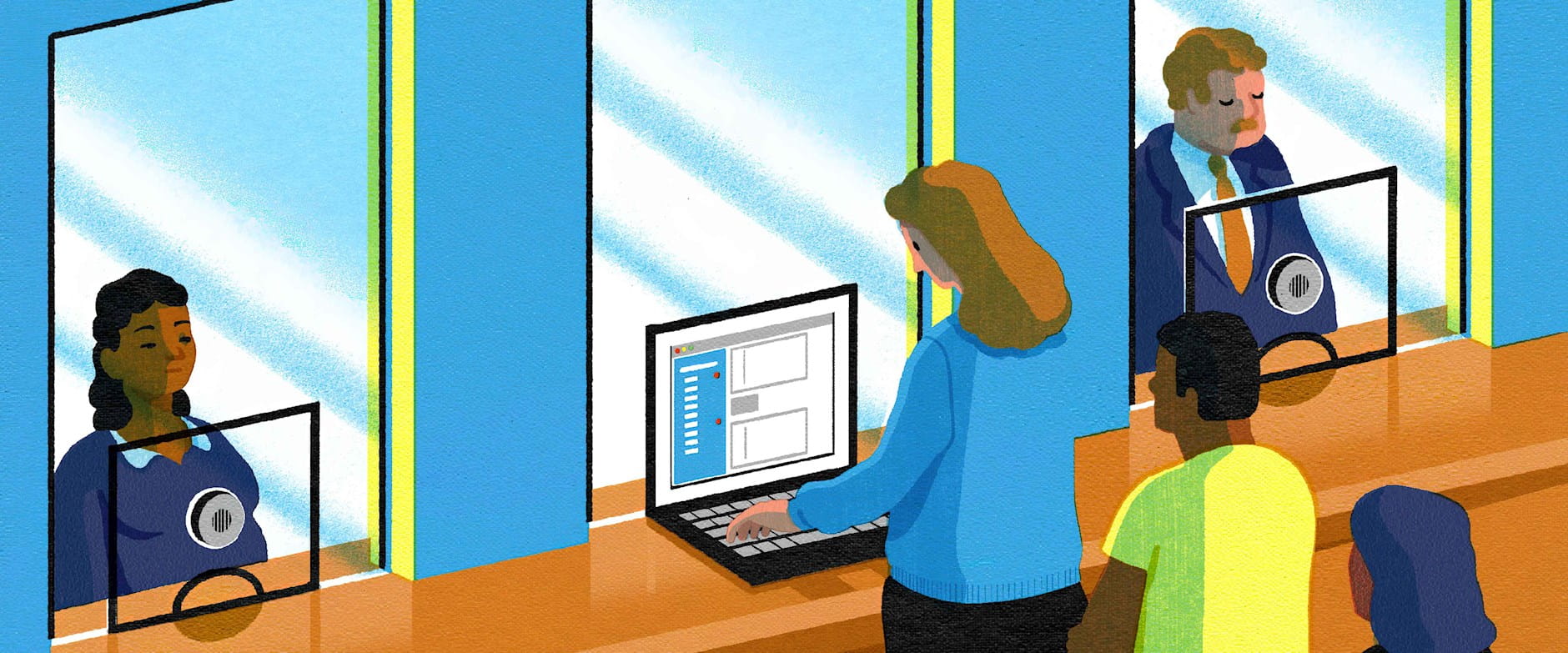Retail customers of online banks enjoy higher interest rates on deposits when rates are rising than customers of banks with significant brick-and-mortar branch networks, according to Ohio State’s Isil Erel, University of California at Irvine’s Jack Liebersohn, Chicago Booth’s Constantine Yannelis, and Booth predoctoral researcher Samuel Earnest.
Online banks have increased their deposits by a factor of 30 since 2001—triple the rate for traditional banks—the researchers calculate, meaning that the relative speed at which they pass along official rate hikes to consumers could have important implications for monetary-policy makers.
Considering that most banks have some digital presence now, the researchers distinguished between ones that operate predominantly online and those that rely on branch networks. They built on an existing sample of online banks to create a grouping that had their interest rates and other information monitored by data provider RateWatch, a division of Standard and Poor’s, but had no more than 30 physical branches. They also created a group consisting of traditional banks that were less reliant on a digital presence.
Erel, Liebersohn, Yannelis, and Earnest then studied banks’ responses to a series of nine increases in the federal funds rate, which started at 0 in March 2022 and rose to 5 percent in April 2023. For every 1 percentage point rise in the benchmark, online banks increased the annual yields they paid depositors by 0.25¬–0.35 percentage points more than traditional lenders, the researchers find.
To avoid concerns that size differences would skew the results, the researchers compared 17 online banks with average assets of $66 billion to a group of similarly sized brick-and-mortar rivals. The online banks were taken from a group reviewed by personal finance company NerdWallet and the traditional institutions were chosen from among March 2021 filers of Federal Financial Institutions Examination Council call reports.
No reward for loyalty where deposits are stickier
When the US Federal Reserve’s monetary-policy rate started rising in March 2022, interest rates on products offered by online banks increased faster than those at traditional banks, where depositors tend to be more loyal. One year later, there was a much larger spread between the two rates.
In both cases, the study was limited to institutions for which interest-rate data was consistently available from RateWatch, a service that tracks bank-branch interest rates and is widely used in academic research. On the basis of these data, the researchers looked at what they determined was a representative group of retail banking products that included savings and money market accounts, certificates of deposit, and individual retirement accounts. As expected, considering that online banks pay higher rates, inflows into interest-bearing deposits were larger for online banks than for traditional ones. There was no difference in terms of inflows among deposits that paid no interest.
The key difference between the two groups of similarly sized banks they assembled was technology, the researchers find. Sitting in the comfort of their living rooms, online customers can compare the rates offered by rival banks as well as by mutual funds and other alternatives. Then, with a few mouse clicks, they can quickly transfer money between institutions.
The frictionless ease with which customers can take advantage of outside investment opportunities forces online banks to offer competitive interest rates. Deposits at brick-and-mortar banks, by contrast, tend to be sticky, meaning the incumbents face less pressure to raise rates in order to retain assets.
The researchers considered whether variations among customers, rather than technology, might explain the banks’ different responses to increases in benchmark interest rates. For example, it might be that online banks tend to offer higher deposit rates because their users are younger, more educated, and more inclined to spend additional time comparison shopping among institutions.
To adjust for this possibility, the researchers compared online banks with branches of traditional rivals located in zip codes with similar demographics. The results were still remarkably similar across markets with different types of clients and levels of competitiveness, which suggests they were indeed driven by the technological differences rather than factors such as the type of customers the banks attract.
The migration of deposits online accelerated further after the Federal Reserve began hiking interest rates in spring 2022. Institutions that the researchers identified as purely online held about 5 percent of total system deposits as of March 2023.
Observers have long known that when monetary officials alter interest rates, the effects become muted as the rate changes flow through banks. By lowering retail customers’ search costs, online banks are increasing the speed at which those changes pass through the banking system. As their market share grows, they could radically affect the way monetary policy is transmitted, requiring regulators to update their models and guidance, the researchers write.
Isil Erel, Jack Liebersohn, Constantine Yannelis, and Samuel Earnest, “Monetary Policy Transmission through Online Banks,” Working paper, June 2023.
Your Privacy
We want to demonstrate our commitment to your privacy. Please review Chicago Booth's privacy notice, which provides information explaining how and why we collect particular information when you visit our website.
